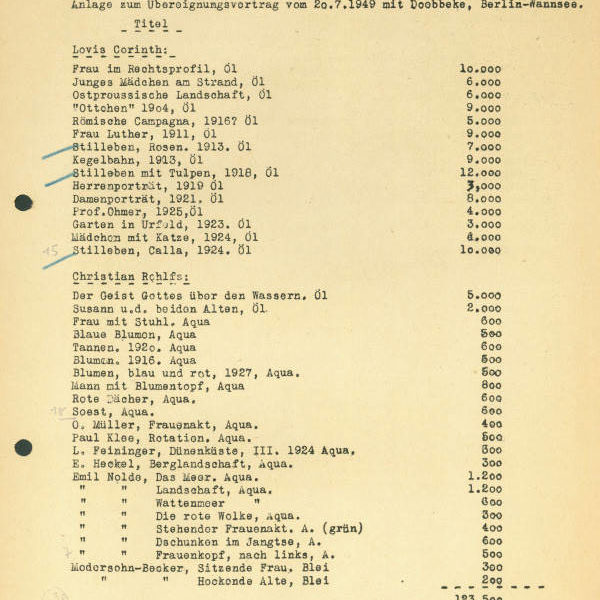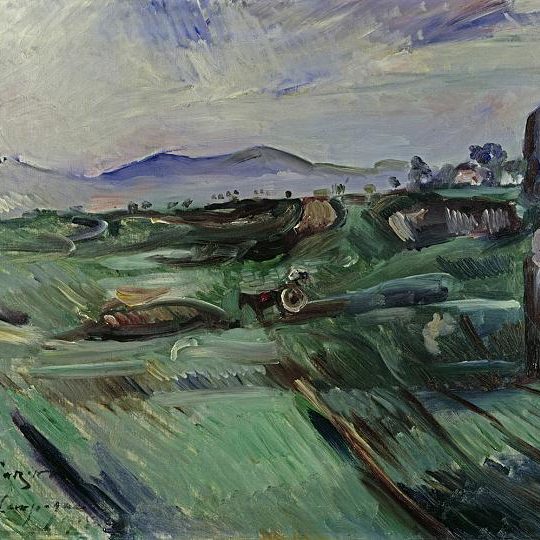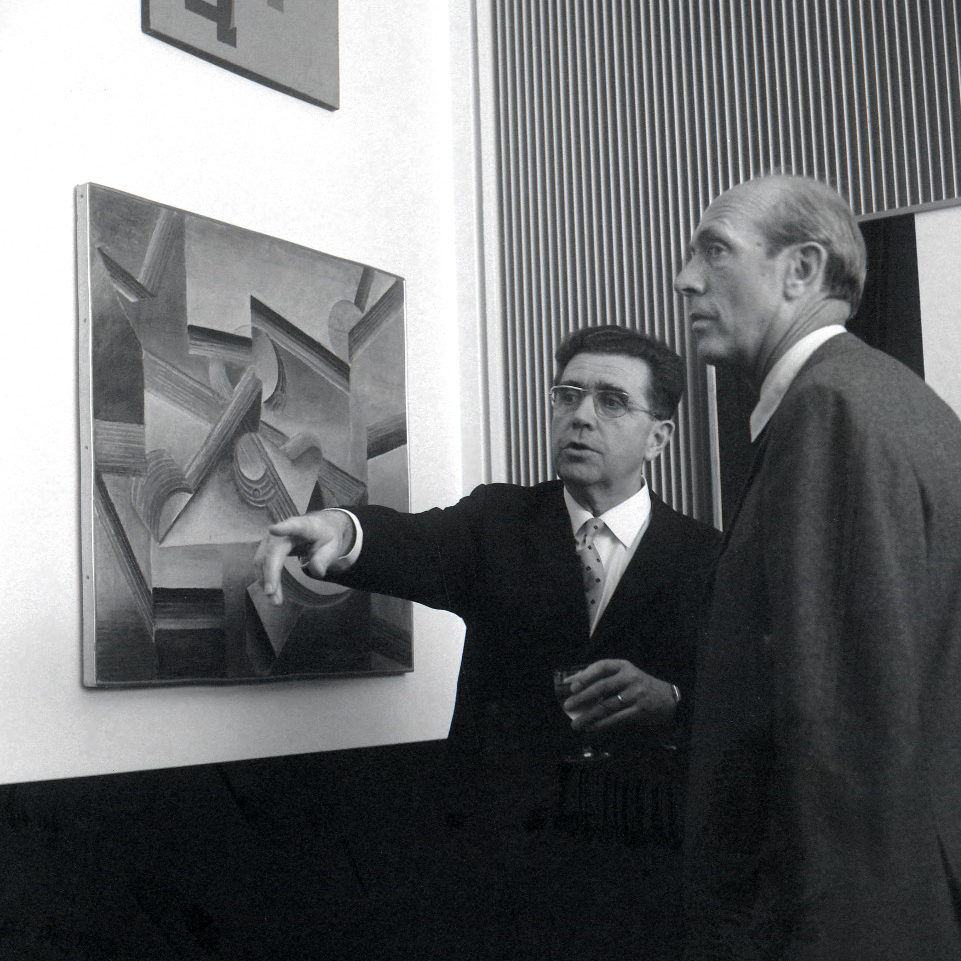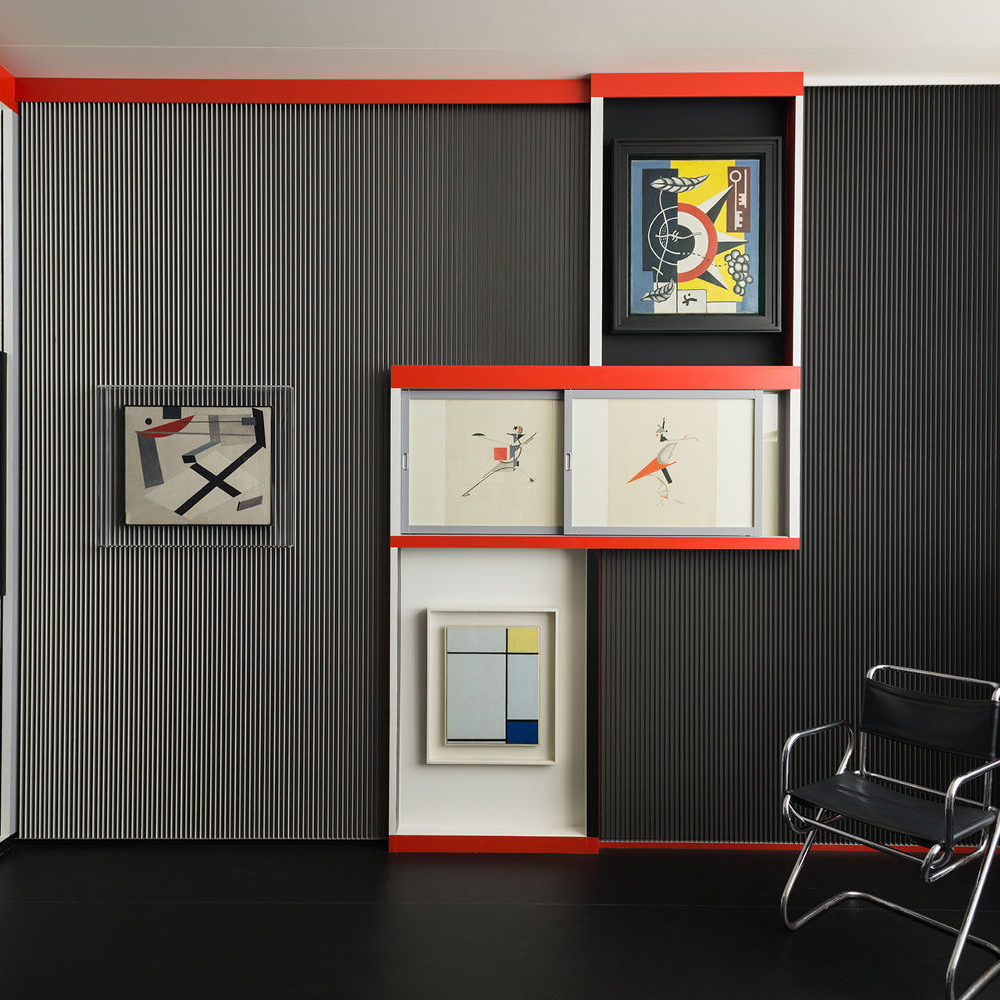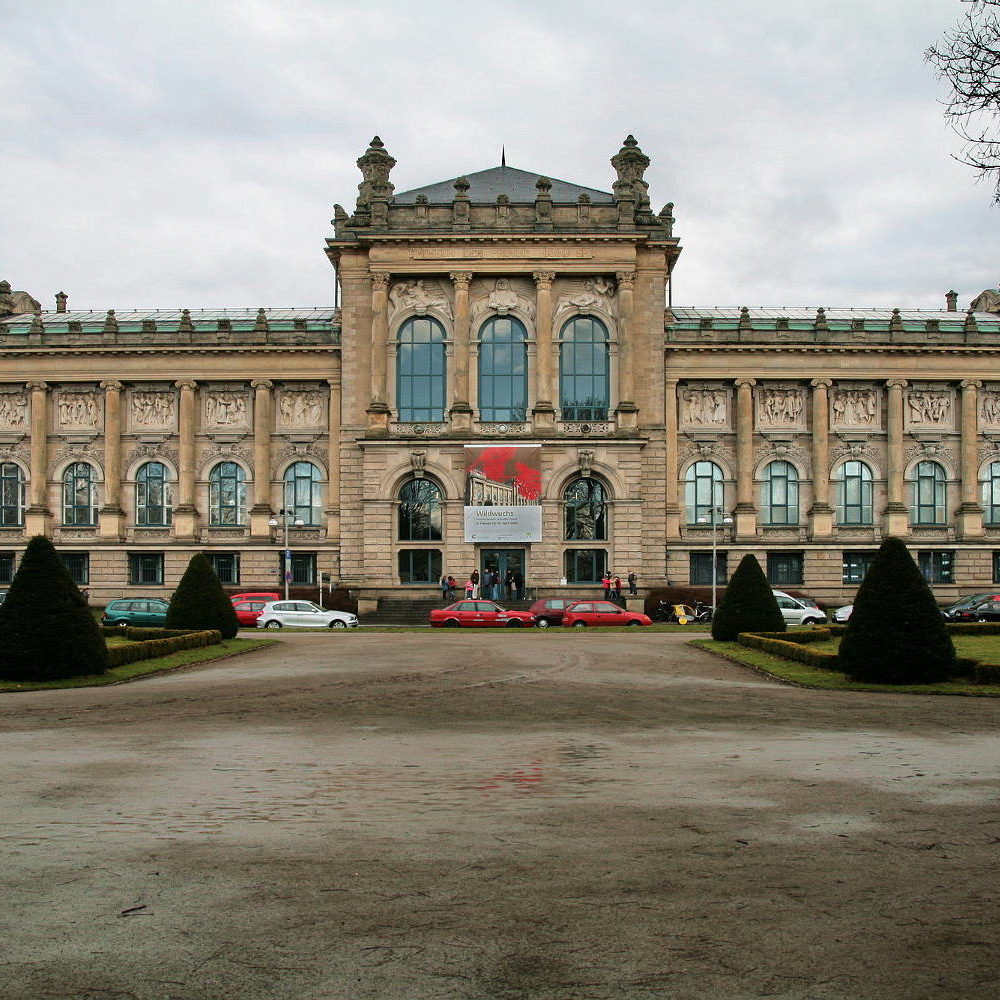In the 1920s, Hanover was a modern industrial city, yet at the same time in terms of general artistic tastes it was a “stiff and starchy provincial backwater” (Sophie Lissitzky-Küppers). Nevertheless, there did exist a few pockets of avant-garde art in the form of the Kestner Society [Kestner-Gesellschaft], which was the Provincial Gallery [Landesgalerie] under the management of Alexander Dorner, and the group of artists known as ‘the abstracts of Hanover’ [“die abstrakten hannover”] with Kurt Schwitters. After 1933 this embryonic awakening was stifled.
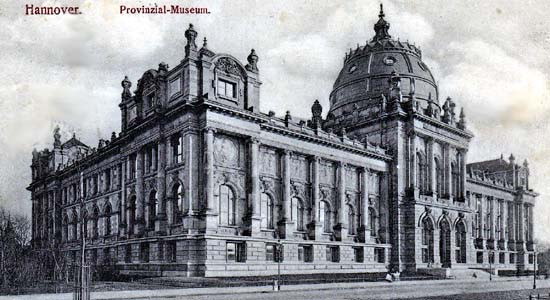
Artistic awakening
The Kestner Society is a private art society founded in 1916 in the middle of the First World War, dedicated to promoting contemporary trends in art. Alongside Expressionism, a focus on abstract art soon emerges. In 1923, works by El Lissitzky, Wassily Kandinsky and László Moholy-Nagy are featured in three exhibitions. In 1924 Kurt Schwitters holds an exhibition. Königstrasse 8 becomes the venue for the German, Russian and international avant-garde…
For a good while, the Russian-Jewish architect and artist El Lissitzky lives and works in the Kestner Society building. He holds public lectures there on the art of “New Russia”, creates two Kestner Portfolios, designs the MERZ Magazine 8/9 together with Kurt Schwitters, and works as a graphic artist, amongst other things, for Pelikan [a company that supplies paper, office supplies and stationery products]. Art historian Dr. Alexander Dorner, curator and, from 1925, director of the art section at what is now the Lower Saxony State Museum Hanover, has close links with the Society.
Cabinet of Abstracts
Under Alexander Dorner, the art section in what was then the Provincial Museum entertains contemporary modern art. For the first time ever abstract, cubist and constructivist works are acquired: pictures and sculptures by Alexander Archipenko, Fernand Léger, László Moholy-Nagy, Piet Mondrian, Picasso, Kurt Schwitters and Lissitzky himself. However, they are not hung or mounted in the conventional fashion. Instead, El Lissitzky embeds them in a dynamic synthesis of art, designing a style of presentation with partly movable wooden panels, steel elements, revolving display cabinets and fabric coverings, thereby creating for Hanover an art space, unparalleled in any of the world’s museums.
Theft of works of art
In Munich in 1937, the National Socialists stir up hatred by staging an exhibition against – in their eyes – “Degenerate art”. It is followed by a ‘clean up’ of public museums and galleries across the whole of Germany. A commission travels to around 100 museums and confiscates over 20,000 works by more than 1400 artists. The campaign affects art movements as diverse as Expressionism, Abstract Art and New Objectivity [“Neue Sachlichkeit”] – in short, Modern Art. Hanover loses a total of 278 paintings, sculptures, drawings and watercolours by Barlach, Corinth, Feininger, Kollwitz, Modersohn-Becker, Nolde, Schwitters and others. At the same time, the “Cabinet of Abstracts” [Kabinett der Abstrakten] is removed from the State Museum. In 1936, Alexander Dorner resigns from his position and in 1937 he emigrates to the United States.
The plan is for the rejected artworks to be sold abroad through for four art dealers in exchange for foreign currency. However, contrary to these instructions some of them are sold to German dealers and collectors, or kept for themselves (as in the case of the Hamburg art dealer Hildebrand Gurlitt). Works for which no potential buyer is found are burnt as “unusable remnants” in the yard of Berlin’s main fire station on 20 March 1939.
Confiscated art
Germany has important private art collections and galleries in Jewish ownership. After 1933, many of them are forced to sell their collections in order to safeguard their livelihood or to finance their emigration. These forced sell-offs usually only generate a fraction of their value.
From 1938 to 1962 – interrupted by a brief phase of “Denazification” –, the director of the art gallery of the present-day Lower Saxony State Museum is the art historian Dr. Ferdinand Stuttmann. As the expert for the National Socialists’ ‘Reich Chamber of Fine Arts’ [“Reichskammer der bildenden Künste”] and member of the NSDAP [Nationalsozialistische Deutsche Arbeiterpartei, i.e. the National Socialist German Workers’ Party or Nazi Party], it is his task to inspect and appraise confiscated collections. After the war, on Stuttmann’s advice, the City of Hanover buys over 100 high-quality works of art for the Landesgalerie from the Berlin art dealer (and early adherent of the NSDAP) Dr. Conrad Doebbecke. Today their origin is highly controversial. Doebbecke himself warns Stuttmann: it would be better to “leave the paintings in their crates” for a while.
Provenance research
In 2008, the state capital Hanover created a post for provenance research in respect of the city’s art collections. In 2007, the painting by Lovis Crinth “Römische Campagna” [“Campagna Romana”] from 1914 is returned to the heirs of the former owner – a Jewish doctor and art historian, who, after being dismissed from public service in May 1933, had sold his art collection and emigrated. In the case of other artworks that were acquired from Doebbeke, the decision has been deferred. Documents pertaining to their changes of ownership are missing.
Since 2008, Hanover’s Lower Saxony State Museum itself has also had a Provenance Research Unit. This is responsible for the state’s art collections and, since 2015, has served too as the coordinating office for the Provenance Research Network in Lower Saxony.
Reconstruction
In 1968, on the initiative of Lydia Dorner, Alexander Dorner’s widow, the Cabinet of Abstracts is reconstructed in the Lower Saxony State Museum. In 1979, this slightly modified reconstruction is moved to the newly opened Hanover Art Museum [Kunstmuseum Hannover] together with the Sprengel Collection, where it remains until 2016.
The current 2017 reconstruction in the Sprengel Museum attempts to recapture the original cabinet with the help of contemporary photographs. The choice of materials, such as wood, iron strips, linoleum and paint, follows the standards of 1920s craftsmanship. An illustrated visitor information leaflet on the new permanent installation is available in the museum.
Additional online information
Homepage Lower Saxony State Museum
hannover.de Acquisitions from the Dr. Doebbeke Collection [in German]
Provenance Research Network in Lower Saxony [in German]
Lost Art Internet Database
Wikipedia entry Cabinet of Abstracts [in German]
Wikipedia entry Sophie Lissitzky-Küppers
Hannoversche Allgemeine Zeitung In the new cabinet of the abstract, one becomes an active player [in German]
Sprengel Museum Hannover Homepage
Further reading: Click here
Texts and images: Michael Pechel

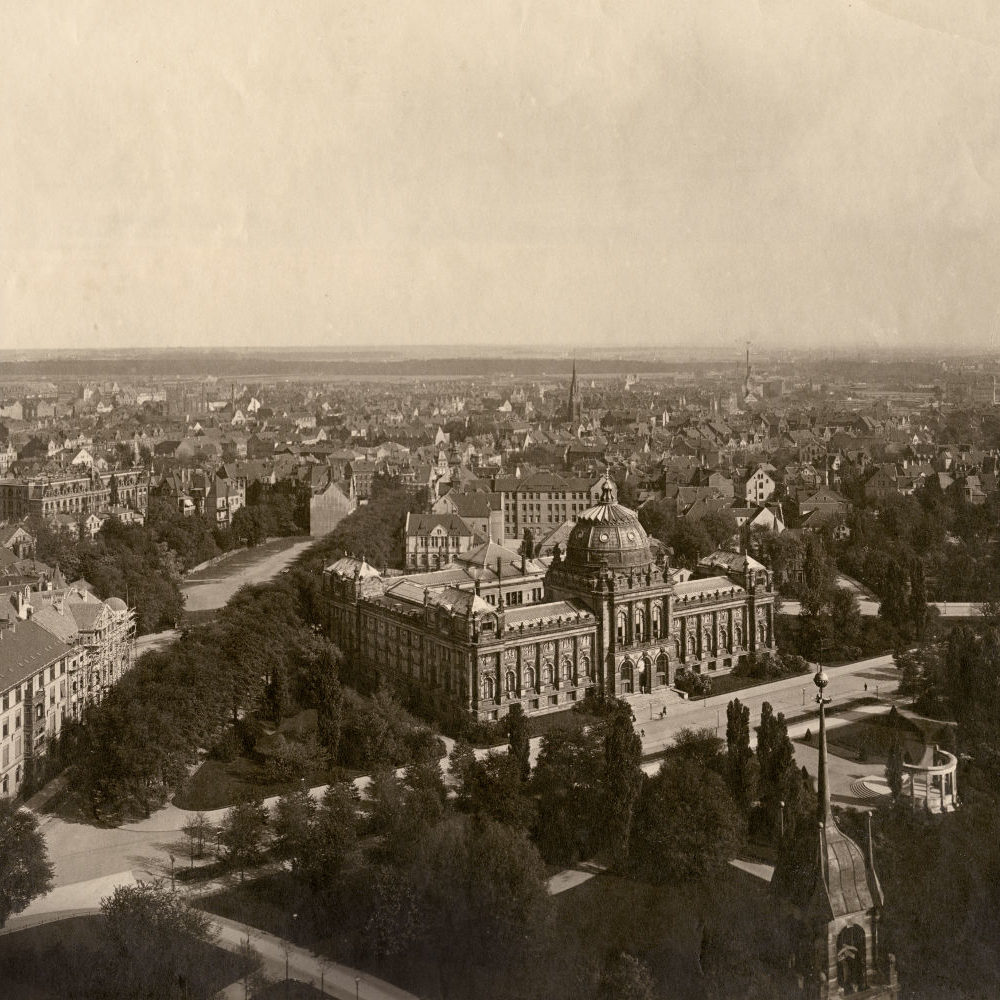
![Hanover: Portrait of Dr. Alexander Dorner, Director of the Art Gallery at the Provincial Museum 1924-1937 with, for the time, typical fraternity duelling scar [seen as a badge of honour and associated with status and an academic institution], undated. Historical Museum of Hanover](https://zukunft-heisst-erinnern.de/wp-content/uploads/2020/03/landesmuseum_2-1000x1000.jpg)
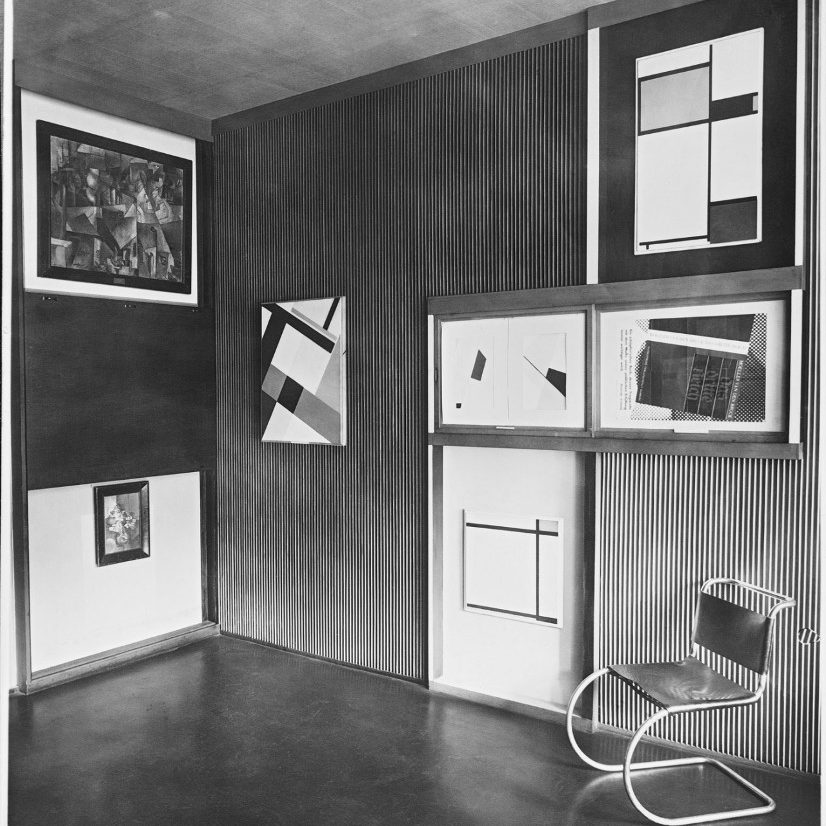
![Hanover: Portrait of the art historian Dr. Ferdinand Stuttmann (1897-1968). 1938-1945 head of the art department at the Landesmuseum [Lower Saxony State Museum] and the decorative arts collection at the Leibnizhaus, and also curator of the Kestner Museum. 1952-1962 director of the Lower Saxony State Museum. Photo undated. Historical Museum of Hanover](https://zukunft-heisst-erinnern.de/wp-content/uploads/2020/03/landesmuseum_4-680x680.jpg)
